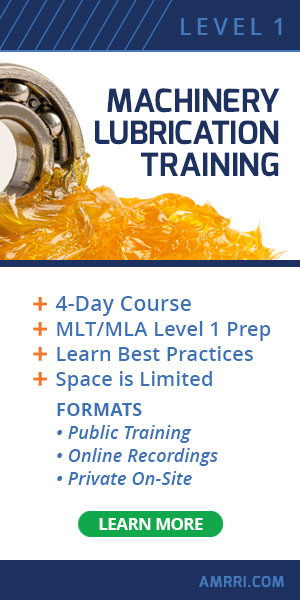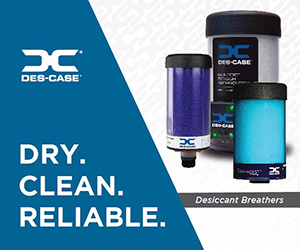A lot has already been written about food grade lubricants, so a summary of what they are is a good place to start before taking a closer look at some of the issues relating to their use and the ongoing concerns in this area.
Regulation of Food Grade Lubricants
Historically, the United States Department of Agriculture (USDA) approved lubricants where incidental food contact may occur within the meat and poultry industry (H1 Lubricants). The Food & Drug Administration (FDA) provided guidelines on what defined approved components could be used in these H1 Lubricants as outlined in the Code of Federal Regulation (21 CFR 178.3570).
The approvals gained industry acceptance, with other areas of food manufacturing starting to adopt the process.
Effectively, the USDA evaluated the lubricant formulation and reviewed the labeling, but seldom with any actual testing. However, a lubricant manufacturer or supplier would obtain a letter of authorization from the USDA for their products that were in compliance in terms of the base oil, additives, and thickeners.

The USDA authorization program ended in 1998, and the National Sanitation Foundation (NSF) took over and continued the work.
The National Sanitation Foundation was founded in 1944 in the USA and went global in 1990, changing its name to simply NSF.
In 2006, the use of lubricants became more closely regulated, not just within the Food & Beverage industry but expanded to include animal feeds, pet food, pharmaceuticals, cosmetics, domestic products, and clothing.
In association with the NSF supporting the development, a new standard, ISO 21469:2006 (Safety of machinery – Lubricants with incidental product contact – Hygiene requirements), was launched. From the International Standards Organization website, the Abstract states,
“ISO 21469:2006 specifies hygiene requirements for the formulation, manufacture, use, and handling of lubricants which, during manufacture and processing, can come into incidental contact (e.g., through heat transfer, load transmission, lubrication or the corrosion protection of machinery) with products and packaging used in the food, food-processing, cosmetics, pharmaceutical, tobacco or animal-feeding-stuffs industries. It does not apply to substances used as product additives or those in direct product contact, but confines itself to hygiene without addressing occupational health and safety matters.”
ISO 21469 went beyond the previous NSF non-food compound registration process by adding reassurance regarding full product testing and an annual inspection of each lubricant manufacturing facility. It also brought a global perspective to the process.
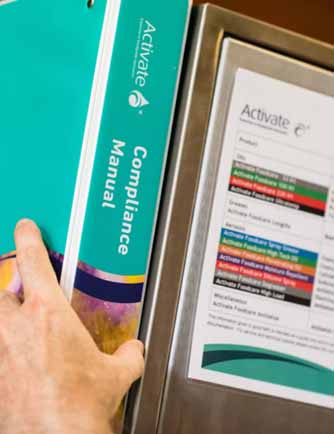
Lubricants such as “Kosher,” which means sanctioned by Jewish law, and “Halal,” which means permissible in Arabic, also have religious issues to consider.
Ultimately, given all the requirements to which the lubricant must conform and the protocols surrounding the design and operation of a food grade lubricant manufacturing facility to avoid contamination, the cost of these lubricants is high. Still, ongoing developments over the last ten years have seen steady improvements in their performance.
The NSF White Book™ lists all the registered suppliers of food grade lubricants and can be found at info.nsf.org/usda/psnclistings.asp
What Are Food Grade Lubricant Categories Such as H1 or 3H?
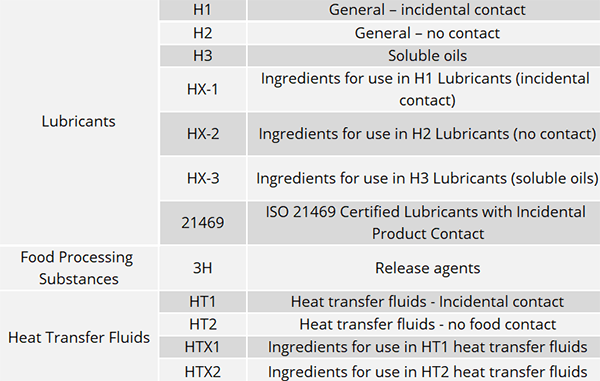
Food Grade Lubricant Categories
H1 Lubricants
General – incidental contact – a lubricant that could have incidental contact with the product and the ingredients relate to HX-1. This is usually where the lubricant is used to lubricate machinery where leakage may come into contact with the product.
H2 Lubricants
General – no contact – essentially, the lubricant cannot come into contact with the product, and the ingredients of H2 relate to HX-2.
H3 Lubricants
Soluble oils – These lubricants may be applied to equipment where the product will contact the soluble oil, such as meat hooks, etc., and relate to the USDA’s focus on meat and poultry.
The ingredients of H3 relate to HX-3.
3H Release Agents
Release agents – Release agents for use on molds, grills, or other machine parts to prevent the product from sticking to the surface.
While many suppliers talk about 3H Lubricants, technically, 3H is a release agent, although it may provide a lubricating function. In addition, 3H and H3 are not the same or interchangeable.
Challenges Facing the Industry
Before the ISO standard, which became law in many countries to use Food Grade lubricants, food manufacturing facilities and, increasingly, allied industries typically assessed the risk. While the design could be improved to mitigate the concern, most users erred on caution and opted for H1-rated lubricants.
In my experience, unfortunately, this led to a situation where H1 was seen as overriding the need for better maintenance and engineering design in a plant because “we’re covered; it’s an H1”.

While the implementation of ISO 21469 dealt with the issue of manufacturing rated lubricants, it did not go far enough in terms of the end-user, with minimal guidance on storage and no guidance on maintenance of machinery and implementation of a reliability program, never mind any focus on the act of lubrication in end-user plants.
For the lubricant manufacturer, there is the added problem that the Point-of-Sale chains have added further pressure through the supply chain, especially regarding packaging products.
Packaging suppliers are going to need to transition to mineral oil-free lubricants from January 2024, which are prohibited according to the latest British Retail Consortium Global Standard for Food Safety and proposed European Union (EU) legislation, which will ban Mineral Oil Saturated Hydrocarbons (MOSH) and Mineral Oil Aromatic Hydrocarbons (MOAH) in food packaging. So, once again, the pressure is again building on the lubricant suppliers to help the supply chain achieve compliance.
According to Activate Lubricants Ltd. in the United Kingdom, the path of transitioning from relatively low-cost white mineral oil to a sustainable alternative will bring challenges in the form of:
- Significant cost increases, although on the positive side, the high-quality synthetic base oils may improve reliability and performance, along with reduced downtime for lubricant changes.
- Performance claims and quality assurance will need closer scrutiny owing to variations in the performance and suitability of the various base oils.
- Supplier trust and dependence will need to be considered owing to potential cross-mixing problems between base oils and, more so, the fact that these specialist oils will not always be available on short delivery times.
- Technical adaptation and the Management of Change (MOC) must be rigorously assessed when considering alternatives and communicating changes accordingly.
- Market acceptance of new alternative lubricants concerning users expecting “business as normal” during the changeover period.
- Research and development will require significant resources, which will drain resources from other areas where new technologies and ideas might be better pursued for the lubricant supplier and the whole supply chain.
- Environmental and sustainability challenges will also need consideration, although, as with the cost increases, better-performing base oils may result in less handling and disposal.
Of course, this raises the issue that there is still no consistency globally despite ISO 21469’s confirmation in 2020, leaving the standard as per the 2006 issue. With tighter regulations coming out of Europe, what does this mean for the rest of the world and global trade?
Addressing the Non-compliance Areas of Lubrication for the Supply Chain
Traditionally, the Food & Beverage (F&B) industry has operated on very slim profit margins, so management was reluctant to invest in reliability. In other sectors, such as pharmaceuticals, this has been much less of an issue; however, in the last four years, thanks to the efforts of the lubricant suppliers, the message is starting to filter through to the F&B sector.
As noted previously, food grade rated lubricants are far more expensive than general lubricants owing to the restrictions in formulations and compliance with ISO 21469.
Conversely, much of the equipment operated by the end user is generally smaller and of lower capital cost, so the financial benefits of a reliability program have been less appealing.
That said, the negative publicity from an incident and the added audit pressures subsequently from the supply chain are difficult to quantify in cost terms but significant.
As in other industries, dedicated lubrication teams or individuals have been lost with the tasks shared by maintenance and operations. The lack of knowledge, awareness, and skills has resulted in the typical problems seen from poor lubrication practices.
While capital-intensive industries have started to address this, the F&B sector has been slow to adopt the same approach, with the exception.
In the last few years, I have visited an increasing number of F&B facilities to undertake awareness training in lubrication best practices, and the site walkarounds I undertake with the attendees have given me a better insight into this industry.
While downtime costs are lower compared to other industries, such as Oil and Gas, the slim profit margins still mean this is a significant financial burden given the Just-In-Time production and the waste potential of the product, never mind the penalty clauses in contracts.
Several steps can be taken to minimize the issue and increase the Overall Equipment Effectiveness (OEE), which tends to be still 40% – 50% for several clients with whom I have spoken. Any increase in the OEE is almost pure profit, bar the added costs of the raw material and other associated costs of increasing production.
A few essential aspects spring to mind regarding reducing downtime. As mentioned, increasing the oil change intervals is one area, be that through the use of higher quality lubricants or filtration units.
I have witnessed oil change intervals going from six months to over three years in the packaging industry on the gearboxes of bottle-making plastic injection molding units. This reduces downtime, cost, and, more importantly, risk.
Risk must be managed; as with safety, we put procedures in place to control the risk. Controlling risk in the production facility using color coding, signage, documented task procedures, and the right tools will also manage risk.
If done right, they also improve the lubrication management and encourage doing the right work right, leading to improved reliability. Reducing manual handling by using auto-dispensing systems for the grease and using the appropriate container with a hand pump, hose, and quick-connector to fit the machine all reduce the risk of spillage and product contamination while reducing effort.
The very nature of food and beverage production means moisture and solid particulate contamination is a significant issue, and frequent failures are often the result, especially where regular Clean-in-place (CIP) and Steam-in-place (SIP) happen.
Contamination control is paramount, and appropriate desiccating breather systems and quality seals are essential to minimize damage resulting from the inattention of a cleaner with a high-pressure hose. Raising awareness and training provision is necessary for the cleaning crew.
In one case, talking to a group of training attendees, I was informed that the Mean Time Between Failure (MTBF) on the bearings was under six months, and the cleaning crew was to blame. After talking with the senior personnel and raising this concern, it transpired that with the start of COVID, training had been stopped, and two years later, this was the outcome.
However, in a properly managed facility where precision and presentation regarding lubrication are in place, this can only positively impact any audit process and the external audit personnel.
Get Certified!
As is often seen on social media, the outcome of not training personnel on new systems is that the situation will revert to as it was, with all that investment in the right tools wasted. I often mention the three Ts essential for success: Tools to do the job, Time to do the job, and most importantly, Training to do the job.
Training is essential. Whether it is awareness training for a broad range of company personnel or specific training for those dealing with food grade lubricants.
However, many of the maintenance personnel involved often need to gain this basic knowledge, having perhaps been coached by similarly un-educated mentors, thus perpetuating the wrong work being done wrong.
Just as a simple error of the wrong oil being added can cause untold issues in a safety-critical environment such as in the petrochemicals industry, so can the same error lead to problems of negative publicity for a food and beverage manufacturer in the event of an issue depending on the severity.
As we have increasingly seen over the last two decades, industry in general has woken up to the need for certification in lubrication and condition monitoring. Increasingly, lubricant suppliers, contractors, and end users are getting their personnel certified via various certification bodies.
One such certifying body that has risen to prominence since its inception nearly 25 years ago is the International Council for Machinery Lubrication (ICML), offering both Machine Lubricant Technician (MLT) and Machine Lubricant Analyst (MLA) certifications at varying levels for on-site lubrication practitioners.
The ICML provides a Body of Knowledge (BoK) on which an examination will be conducted with the candidate needing to achieve a pass mark of 70% to become certified for the next three years with recertification based on a points system.
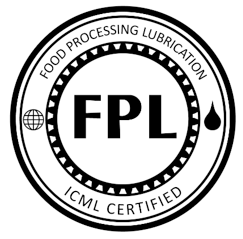
The downside to this in the typical small to medium facility is that most technical personnel will not have the experience or exposure across the board that the MLA or MLT BoK requires.
Until now, my experience has been that we might get engineers on a public course, but seldom would we get an entire team of technicians at a site undertaking such a rigorous 16-hour training session that MLT requires.
Fortunately, the ICML has introduced a new badge, Food Processing Lubrication (FPL). The BoK focuses on the food processing industry and the associated typical equipment type in use. Further, the pre-requisite only requires a minimum of one year of experience handling industrial lubricants and training in the BoK. For those already certified at MLA I or MLT I, one year of experience is optional.
Clearly, the food grade lubricants supply business has risen to the challenges imposed by regulation since the late 1990s and will continue to do so as newer regulations and demands are implemented.
However, two issues will remain: a level playing field on regulations in terms of international trade and a lack of awareness of their importance. Too often, the box is ticked because the system complies, but usually, that is not enough.
Through better education and raising awareness, some of the concerns faced in the supply chain regarding lubricants can be addressed through best practices, thus reducing the risk and minimizing the concern.
If I could give any advice, it would be to build a strong relationship with your food grade lubricants supplier, get your personnel trained and certified, and then work to implement best practices.





